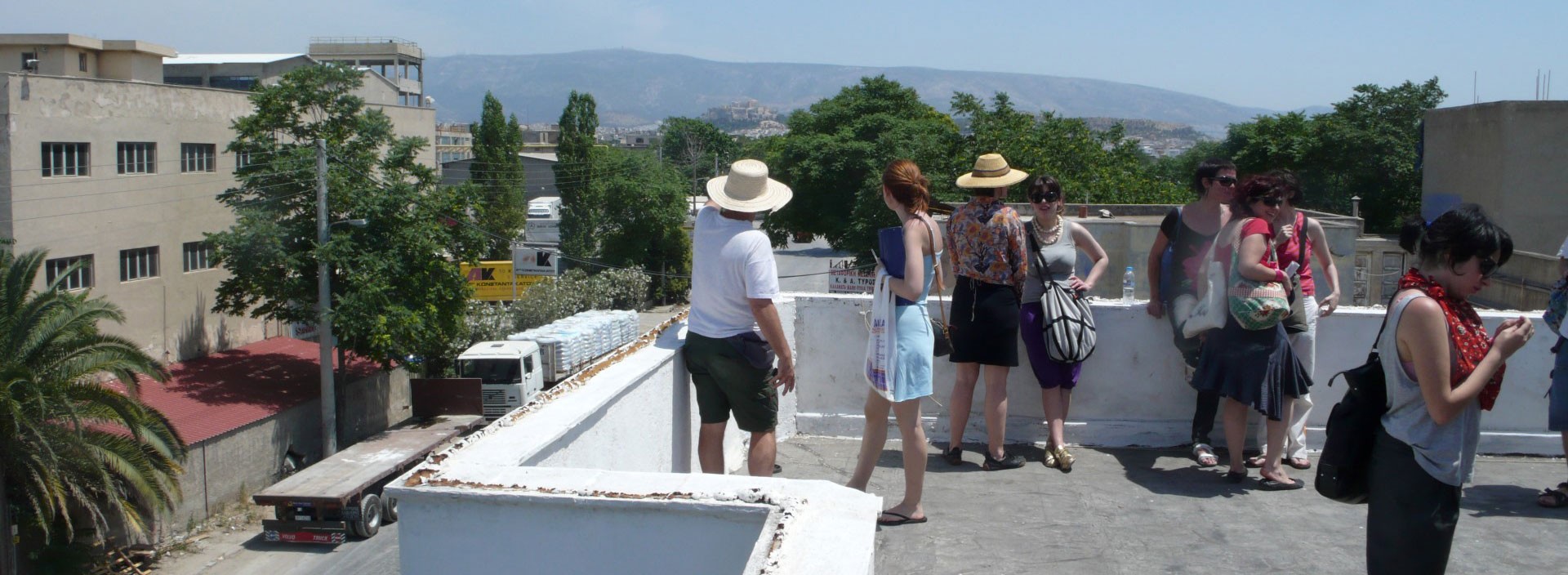Route: Koulouri square in Gkazochori- Polycarpou Street in Elaionas – Markoni. Suggestive actions at stop points.
The area of Elaionas, known from ancient times with the same place-name, that took it from the ancient olive grove of Athens, occupies the central part of the residential area of the capital (3 km from Omonia square). It connects the eastern with the western districts of Athens and this is the region with the longest industrial history. The area consists of Byzantine churches, factories, houses, olive trees and vineyards, archaeological findings and vacant spaces with no use. All these make up an un-built area, and can be characterized as the un-built zone of Athens. Because of its industrial characteristics (pollution, noise, etc.) it was not considered until now an area worthy of exploitation and as a result large parts of the area have been left un-built. This was soon reversed, because large parts of land at very low prices were attractive to the real estate industry, which will leave nothing un-built. Many Roma families were already kicked out of the area where the action took place. At that time it was announced that the new stadium of Panathinaikos as well as shopping malls etc. would be built in the area.

The theoretical mainly issue raised by the walking between the gaps at Elaiona was how can the architect, with the tools available to him, support the un-built without being self contradictory. So what if it has to remain un-built, for what reason, what new conditions of use and inhabitation of the un-built are created? Is there architecture for the un-built? What may be the future of this critical area? How can the design result from the participation?
By walking we detected the un-built parts of Elaionas, and their signification–underlining, in situ, through a route. The feeling of Attica landscape was intense with the mountains and the hills as well as with Elaionas being lost. On our way we made several suggestive actions on the territory at stop points, the unbuilt spaces of the area were mapped (houses, factories, open spaces, archaeological remains) so as to contribute to its rescue from commercial uses approaching the area at high speed.
The procession was a political act contrary to the plans which aim to erase every trace of habitation in the area (already 1500 gypsies were kicked out of the camp) and a protest for not losing a last chance for open spaces in the city center. During the procession there were specific stopping points where actions took place. One of them was the construction site from which we were driven away.

We came in contact with the nomads of the region, gypsies, with few inhabitants, with groups that act in the area.
In the procession participated architects, artists, the citizens’ committee Ms. Pagona Zali and Eleni Tzirtzilaki architects, Maria Sarris artist, Mavra Lazaris architect. In cooperation with the artist Stephanos Chandelis, the artist Manos Kornelakis the inhabitants citizens’ committee of Elaionas, the publisher of the magazine “ANTI” Christos Papoutsakis, the journalist Katerina Economakou, sociologist Katerina Nasioka and others. The material was presented in the Byzantine Museum in the context of the un–built.
Text: DO NOT THROW ANYTHING!
Text: Architectural Views
In the context of the un-built which took place in the Byzantine and Christian Museum of Athens in collaboration with SARCHA
The un-built of Elaionas – Byzantine and Christian Museum

